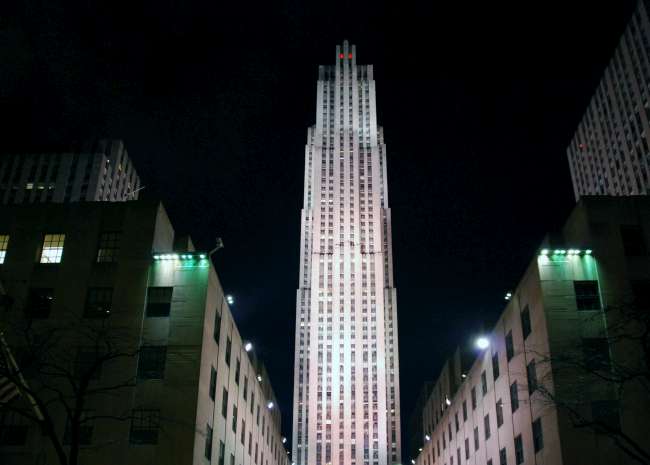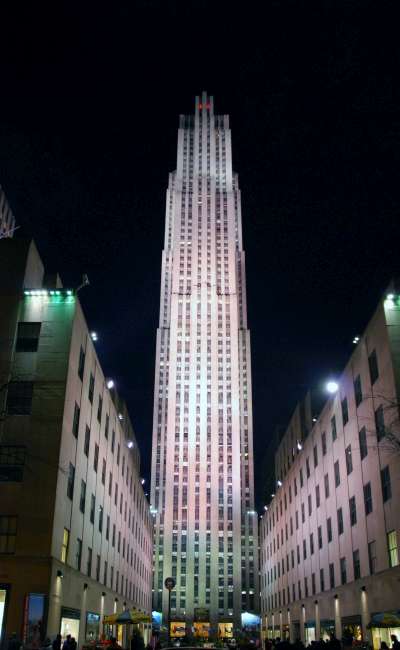
World Monument Photography
July 27, 2024
The Rockefeller Center is located in Manhattan Island in the heart of New York City. It consists for 19 commercial buildings and holds the name of one of the most influential families that helped shape America as it exists today. The family members founded the oil industry, triggering a mass production of all machines driven by hydrocarbons. Members include many other businessmen and politicians. This is the story about the construction of the Rockefeller Center and the man behind it.

John D. Rockefeller, Jr. is the son of John D. Rockefeller, Sr. the founder of Standard Oil. John D. Rockefeller, Sr. being a devout Baptist and an ardent supporter of the Republican party, was both a religious man and a shrewd business man. He is personally credited for industrializing the refining and production of oil, thereby achieving large reduction in costs and creating the oil industry. Armed with this new technology, he proceeded to drive out his competitors through buyouts threatening them with bankruptcy and through secret deals. In 1872, his practice of eliminating his competition through buyouts reached a climax, when he bought out nearly all his competitors in the oil refining business in a short 6 weeks. The conclusion of this was that he retained a virtual monopoly on oil refineries and this period was known as the Cleveland Massacre (90% of the world`s oil refineries were based in Cleveland). In retrospect, his business practices were actually quite humane in that he offered his competitors to be bought out at fair prices, rather than driving them into financial ruin. As a matter of fact, many of his adversaries that he bought out later became his closest business partners.
John D. Rockefeller, Sr. was a pioneer of charitable foundations as we know it today. Even when he was poor, he donated 10% of his earnings to the Baptist church. Later on in his career, he set up charitable foundations that would fund his favorite social causes, ranging from religious endowments, museums, and even funding cancer research. He retired in his 60s to concentrate on philanthropic work. As required by a court order, his company, Standard Oil, was divided into more than thirty different oil companies, which he continued to profit from even after his retirement. He was to live for another forty years, dedicating every living moment to his charitable causes. His achievements would be the blue print of what we would call today socially responsible capitalism.
It was under this upbringing, that John D. Rockefeller, Jr. (or Junior as more commonly called) was born. Although he came from a privileged wealthy family, he was very scrupulous with his spending. He was taught conservative religious ideals, with emphasis on giving back to the community. He enrolled into Brown University, mainly because of its affinity to the Baptist church. He taught in Bible class, was conscience of the social problems of his times, and underwent a detailed study of Karl Marx`s Das Kapital in his senior year. As would be shown later in his career, he would be especially influenced by Karl Marx`s idea that the upper class abuses lower classes, but not from the notion that people should move away from capitalism and material goods.
In 1928, Junior leased a large area of land from Columbia University to develop it into the Metropolitan Opera. After the stock market crash of 1929 and the subsequent loss of jobs of thousands of people, he decided to change his plans for the leased area of land. He decided to proceed with the construction of 14 buildings that would later be known as the Rockefeller Center. Unfortunately, no bank was willing to finance the project, which was estimated at a cost of $250 million dollars. Determined to proceed with the project, Junior provided the funds for the project from his own personal accounts. It would be the largest private building project ever undertaken in modern history. The construction of the center helped keep thousands of middle and low income workers in and around Manhattan employed throughout the Great Depression. The buildings were completed in 1939.

The architecture of the buildings was in line of what was considered to be modern and state-of-the-art at the time. They were designed in the Art Deco style. Art Deco is a style that was pioneered in Paris in the 1920s. Its inspiration is drawn from the geometric symmetries of Ancient Egyptian buildings, such as the Pyramids of Giza. The materials used were metallic and consisted of aluminum, stainless steel, and inlaid wood. It was supposed to project a style of modernity (a symbol of the industrial revolution) and elegance and simplicity through geometric design. The centerpiece of the complex, the GE Building, stood at 262 meters with 70 floors of office space. There are more than 80 pieces of art works around in and around the Rockefeller Center today.
The buildings have been leased to several government and commercial clients. This included the American headquarters of the British intelligence service during World War II, which later became the head office of the Central Intelligence Agency. Five buildings were added to the original 14 buildings, bringing the total to 19 buildings. Tenants of the buildings include General Electric (GE), Band of America, Radio City Hall, and Time-Life. In 1989, the Rockefeller Center became a New York City Landmark. As a tributary to John D. Rockefeller`s philanthropic work through his commercial enterprise, a plaque remembers him by stating developed by John D. Rockefeller, Jr., the original complex of fourteen buildings was constructed between 1931 and 1939, and provided jobs for thousands of laborers in the building industries throughout the Depression.